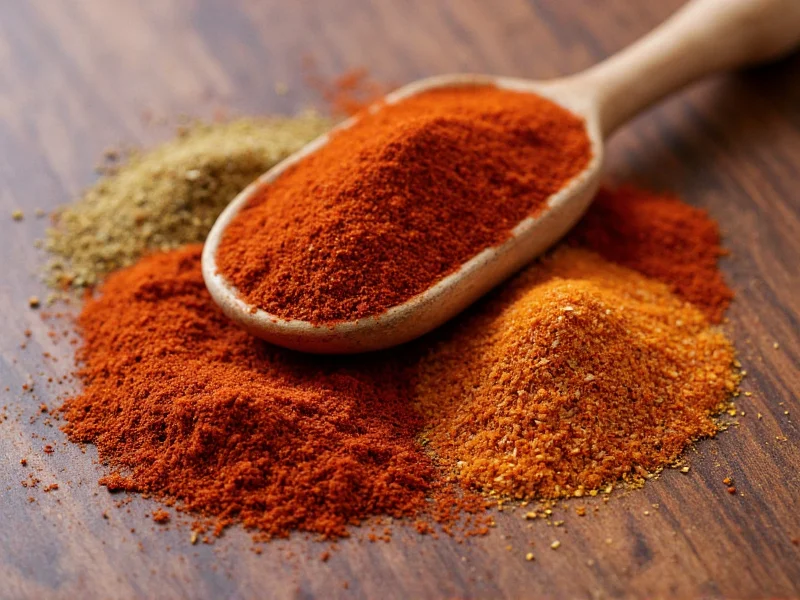Understanding this versatile Japanese seasoning can transform your approach to Japanese cooking. Unlike Western seasoning blends, magi seasoning serves a specific culinary purpose in enhancing rather than dominating flavors. This comprehensive guide explores the authentic composition, proper usage, and creative applications of this essential Japanese pantry staple.
What Exactly Is Magi Seasoning?
Magi seasoning (sometimes written as magi dashi or magi no tare) represents a fundamental flavor enhancer in Japanese home cooking, particularly for savory pancakes and street food specialties. Despite occasional confusion with the Maggi brand seasoning, authentic magi seasoning has distinct Japanese origins and formulation.
The name "magi" derives from the Japanese word for "true" or "authentic," reflecting its role as a genuine flavor booster in traditional recipes. Unlike liquid sauces, magi seasoning typically appears as a dry powder blend that dissolves during cooking, distributing flavor evenly throughout dishes.
Authentic Ingredients and Flavor Profile
Traditional magi seasoning contains carefully balanced components that create its signature umami depth:
| Primary Ingredient | Flavor Contribution | Typical Percentage |
|---|---|---|
| Bonito flakes (katsuobushi) | Smoky, oceanic umami | 40-50% |
| Kelp (kombu) | Deep, vegetal umami | 25-35% |
| Sea salt | Flavor enhancer | 15-20% |
| Rice powder | Texture and binding | 5-10% |
This precise combination creates a complex fifth taste sensation—umami—that complements rather than overwhelms the delicate flavors of Japanese ingredients. The seasoning works through synergy, where the combined effect of ingredients creates a more intense umami experience than any single component alone.
Traditional and Modern Culinary Applications
While magi seasoning originated as a specialty ingredient for specific Japanese dishes, its applications have expanded significantly:
Classic Japanese Dishes
- Okonomiyaki: Mixed directly into the batter at 1-2 teaspoons per cup of flour
- Takoyaki: Sprinkled over the cooked balls before serving
- Hiroshima-style okonomiyaki: Used in the noodle layer seasoning
- Yakisoba: Added during final cooking stages for depth
Contemporary Uses
Chefs and home cooks increasingly incorporate magi seasoning into non-traditional applications:
- As a finishing sprinkle for roasted vegetables
- Blended into mayonnaise for dipping sauces
- Enhancing broths and soups without overpowering delicate flavors
- Seasoning for popcorn and snack foods
- Adding umami depth to vegetarian and vegan dishes
When using magi seasoning in cooking, remember that less is more. Start with 1/4 teaspoon per serving and adjust to taste, as its flavor intensifies during cooking.
Magi Seasoning vs. Similar Products
Many consumers confuse magi seasoning with other products, particularly Maggi seasoning. Understanding these differences proves essential for authentic preparation:
- Magi vs. Maggi: Maggi is a Swiss liquid seasoning containing wheat, while authentic magi is a Japanese dry powder blend focused on seafood-based umami
- Magi vs. Dashi powder: While both contain bonito and kelp, magi seasoning includes additional salt and binding agents specifically for solid foods
- Magi vs. Furikake: Furikake serves as a rice topping with visible ingredients, while magi seasoning dissolves completely during cooking
Substitution Guide for Magi Seasoning
When authentic magi seasoning isn't available, these alternatives can approximate its flavor profile:
| Substitute | Ratio | Best For | Limitations |
|---|---|---|---|
| Homemade blend (3:2 bonito:kelp powder + salt) | 1:1 | All applications | Requires ingredient sourcing |
| Dashi powder | 1:1.5 | Cooking applications | Less salty, may require adjustment | Miso paste (diluted) | 1 tsp miso : 2 tsp water | Marinades, soups | Changes texture, stronger flavor |
| MSG + seaweed flakes | 1/4 tsp MSG + 1 tsp seaweed | Emergency substitute | Lacks complexity of authentic blend |
Proper Storage and Shelf Life
To maintain magi seasoning's delicate flavor profile:
- Store in an airtight container away from light and moisture
- Keep in a cool, dark pantry (not the refrigerator)
- Use within 6 months of opening for optimal flavor
- Check for clumping or off odors as signs of degradation
Exposure to humidity represents the primary enemy of dry seasoning blends. Consider adding a silica packet to your container if you live in a humid climate. Properly stored magi seasoning maintains its potency significantly longer than liquid alternatives.
Simple Recipe: Authentic Okonomiyaki with Magi Seasoning
This beginner-friendly recipe demonstrates magi seasoning's essential role in Japanese comfort food:
- 1 cup all-purpose flour
- 1 1/4 cups dashi stock
- 2 large eggs
- 2 cups shredded cabbage
- 1/4 cup tenkasu (tempura bits)
- 1 1/2 teaspoons magi seasoning
- 2 slices bacon (optional)
- Whisk flour, dashi, eggs, and magi seasoning until smooth
- Fold in cabbage, tenkasu, and bacon
- Cook on griddle for 4-5 minutes per side until golden brown
- Top with okonomiyaki sauce, Japanese mayo, bonito flakes, and seaweed
The magi seasoning in the batter creates a subtle umami foundation that allows the toppings to shine without competing flavors—a perfect demonstration of its role as a supporting player rather than the star.
Expert Tips for Best Results
Professional Japanese chefs recommend these techniques when working with magi seasoning:
- Add during the mixing stage rather than at the end for even distribution
- Combine with a small amount of neutral oil to prevent clumping in batters
- Use slightly less when cooking with already-savory ingredients like bacon
- Pair with acidic elements (like citrus or vinegar) to balance umami intensity
- Never substitute Maggi liquid seasoning 1:1—adjust for liquid content and saltiness
Understanding these nuances transforms magi seasoning from a simple pantry item into a sophisticated flavor tool that elevates your Japanese cooking to authentic levels.











 浙公网安备
33010002000092号
浙公网安备
33010002000092号 浙B2-20120091-4
浙B2-20120091-4